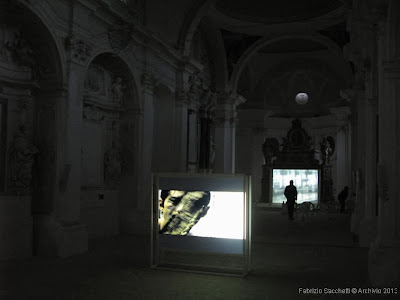[Scroll down for the English version]
L’anno 2014 segna il ventesimo
anniversario della fondazione del MACT/CACT e della sua presenza sul territorio
ticinese, con particolare attenzione al resto della Svizzera e all’Italia.
Con DIALOGOS (2), ultimo momento
espositivo del corrente anno centrato sull’interessante e attuale dialogo tra
artisti e curatori per la cura di Riss(e), si apre anche la campagna di
tesseramento 2014 del MACT/CACT, che vede come prima novità l’aggiunta di un
nuovo museo svizzero sulle nostre tessere di amico e sostenitore: il Kunstmuseum
Luzern (www.kunstmseumluzern.ch) diretto da Fanni Fetzer. Il
Museo di Lucerna, nella cornice architettonica disegnata da Jean Nouvel e
unitamente alla Collezione Angela Rosengart (www.rosengart.ch), rappresenta per il capoluogo
lucernese un’importante presenza museologica e museografica nell’ambito delle
arti visive.
La stagione 2014, di cui vi
rimandiamo volentieri al nostro sito www.cacticino.net, prevede 5-6 esposizioni
tematiche. Da segnalare in particolare la personale di Martin Disler
(1949-1996), dal titolo METAMORFOSI E L’ESPRESSIONE DELL’ARCHETIPO,
che segna – dopo vent’anni esatti
dalla sua precedente e prima esposizione personale ed inaugurale del MACT/CACT
– il ventennale del nostro Istituto. Il silenzio, la Wunderkammer, la ripresa
di un linguaggio dal retrogusto vagamente dadaista e totale, l’affermazione e
la (ab)negazione del corpo, la decostruzione della bellezza sono i temi che
affronteremo nel corso del 2014, iniziando a dare spazio – nel 2015 – alle
collaborazioni con collezioni private d’oltre cantone.
La tessera di amico e
sostenitore del MACT/CACT, oltre alle entrate gratuite nei musei e alla
ricezione della nostra collana di Cahiers
d’Art su temi di approfondimento paralleli alle mostre o direttamente
collegati ad esse, offre – per alcune delle proposte di tesseramento combinato
–, la possibilità di ricevere a casa alcune riviste specializzate in ambito
artistico come Parkett, Spike Quarterly e Arte e Critica,
nonché il pass permanente ad Art Basel per tutta la sua durata.
A chi volesse
seguirci su Facebook, consigliamo di consultare la pagina MACT &
CACT Arte Contemporanea Ticino (https://www.facebook.com/CactCentroArteContemporaneaTicino)
Il MACT/CACT vi
augura uno splendido 2014 all’insegna dell’arte, dello svago e della lettura.
In 2014 MACT/CACT celebrates the twentieth Anniversary of its foundation
and presence in Ticino, paying particular attention to the rest of Switzerland
and Italy.
With DIALOGOS (2), last exhibition of the current year focusing
on the dialogue between artists and curators organized in collaboration with
Riss(e), the new Membership campaign 2014 of MACT/CACT also starts. The first information
is the addition of a new museum within the institutional collaboration among
Swiss Museums: the Kunstmuseum Luzern (www.kunstmseumluzern.ch) directed
by Fanni Fetzer appears now on our cards. The Lucerne Museum of Art, in
the architectural cornice designed by Jean Nouvel and together with the Angela
Rosengart Collection (www.rosengart.ch), represents
for the capital of the Canton Lucerne an important presence in the framework of
cultural Swiss geography.
For the new season 2014 (find out more on www.cacticino.net) 5-6 thematic exhibitions have been
scheduled. In particular the one-man show of Martin Disler (1949-1996), entitled
METAMORPHOSIS AND THE ARCHETYPE EXPRESSED, which celebrates – after
twenty years since his first solo show in MACT/CACT – the anniversary of our
Institution. The silence, the Wunderkammer, some Dada and Ttotal languages,
affirmation and self-abnegation of the body, beauty and deconstruction, these
are the main topics we’re going to approach during 2014, slowly beginning to
enhance the collaborations with private collections in 2015.
The
membership card for friends and supporters of MACT/CACT, beside the entry free of charge to
the museums mentioned on the card and the complete series of Cahiers d’Art on themes about
exhibitions and art in general, offers – as far as some combined membership
proposals are concerned –, the possibility to receive at home international art
magazines such as Parkett, Spike Quarterly and Arte e Critica,
as well as the permanent pass to Art Basle.
For those, who want to follow us on Facebook, we invite them to
browse the page MACT & CACT Contemporary Art in Canton Ticino (https://www.facebook.com/CactCentroArteContemporaneaTicino)
The MACT/CACT wishes you a very beautiful 2014 made of art,
entertainment and reading.

.tif)














